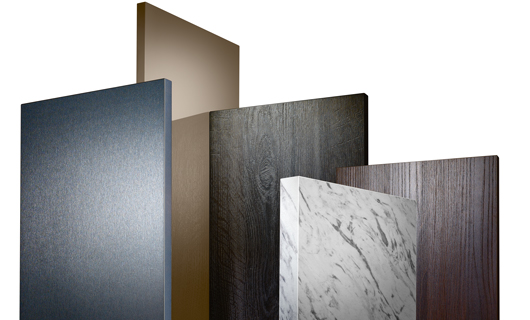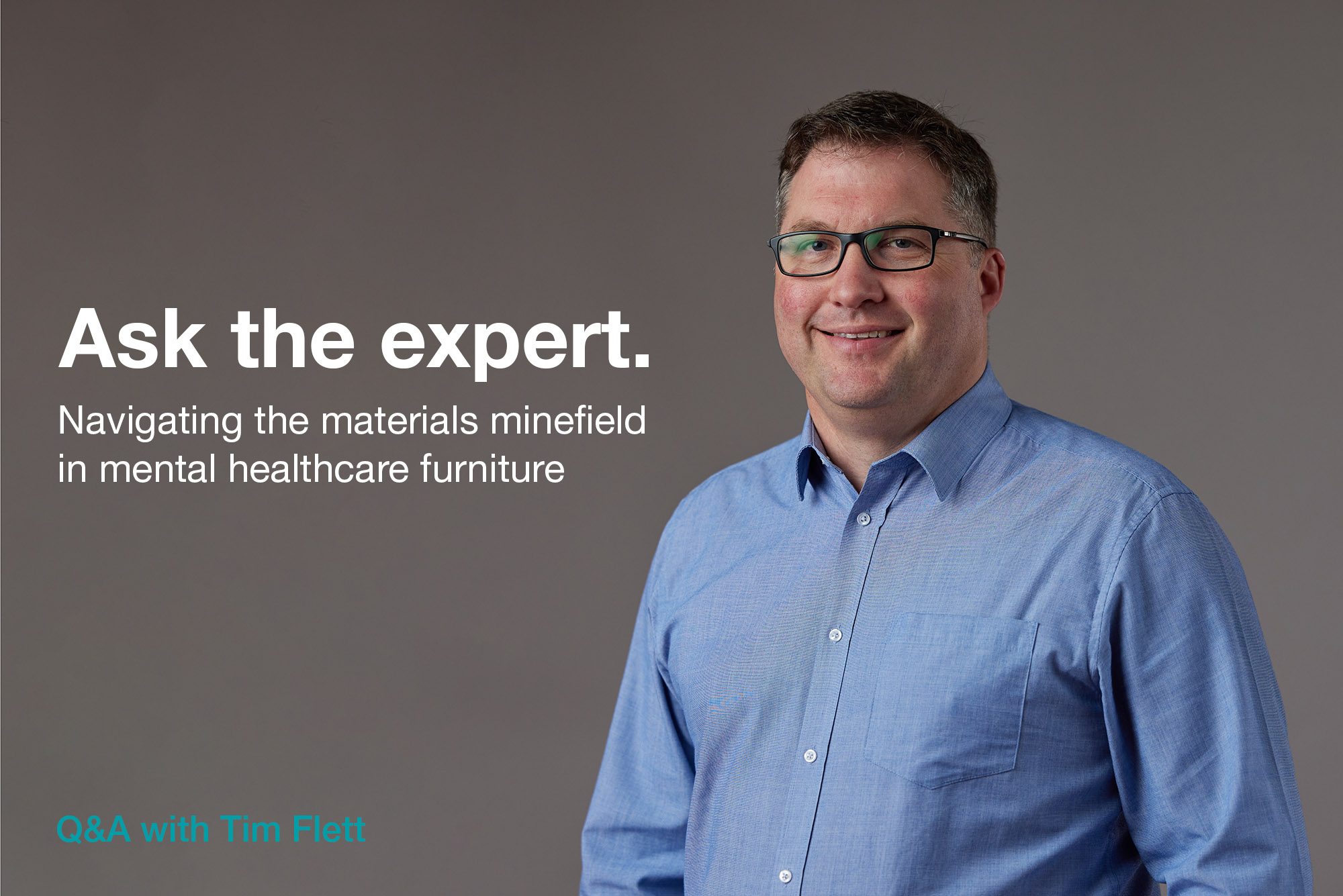Could this worktop become a weapon? And other questions to ask yourself when choosing and pricing materials for Mental Health FF&E
Welcome to the third in our series in which we ask an expert to do the almost impossible: distil decades of experience and knowledge into a few memorable points that will be useful for healthcare architects and estates managers when specifying furniture. This time, we spoke to our Director Tim Flett, one of the founders of Hygenius, who has 24 years’ experience in FF&E design, construction and installation.
Q: We started by asking Tim how on earth can a worktop become a weapon?
When furniture hasn’t been designed well. If a desk is designed without adequate support, for example, even if it’s surfaced with extremely robust materials such as solid grade laminate, a determined service-user can jump on it and break the laminate into lethal shards.
Q: …which leads us to the conclusion that materials choice can’t be separated from design quality.
Absolutely. Materials choice is an integral part of design and getting them both right starts with a careful look at the project.
Study it closely. Look at the demands the different service-users may make. When possible, discuss requirements direct with staff and estate management. An adult acute facility will have totally different needs to a dementia unit, which will be different from a CAMHS unit.
Q:…which must make pricing and specifying a mixed-use project quite a challenge?
The key is understanding the risks in each space.
The risk of vandalism is low in dementia bedrooms, for example, but the frequency of bed-wetting means that you should think about moisture-resistant materials. Also, in such areas, a homely look and feel is very important – gentle pastel colours, non-institutional designs and the inclusion of things like memory boxes for patient memorabilia.
Q: How about Adult Acute? Quite different presumably.
It’s still important to be non-institutional in look and feel where possible, but of course robustness is vital here. You have to accept that service users spend a lot of time in their rooms unsupervised and if highly distressed, may take their frustration out on the furniture and fittings. Assess the details carefully with this in mind – make sure there are no ligature risks even at low level, for example.
Q: And what about the different areas in the facility? Do they demand different approaches?
Very much so. Shared areas, where staff supervision is pretty constant, don’t need such robust materials but have a lot of interface elements to accommodate – integrated TVs, power and data points for example.
Bedrooms are where the risks are greater and where good design and material choices are paramount. Yes, it’s more costly to design and specify for risk-reduction, but a damaged bedroom that’s out of action for a week costs a lot more than robust design and quality materials.
Q: We’re hearing more about fire risk, too, lately.
Yes, fire retardance is another issue that you must bear in mind for materials and design. Fire retardant alternatives are available where fire risk is higher, and good design and materials choice will always offer these.
Q: OK, summing up – we know to start with a careful, detailed study of the project and a face-to-face discussion with front-line people if possible.
We know that risks are different in different areas and for different service-users.
And we also know that materials and design aren’t separate – an expensive material for a desktop can turn into a weapon if the desk itself is poorly designed.
So to finish off, can you give us a materials run-down? A general view of what should go where, accepting cost restraints as well as risk reduction?
Of course!
Supervised & Staff Areas
25mm MFC – Melamine faced particle board. A good, resilient entry level solution, but without moisture resistance or notable robustness. Excellent choice of colours to give a homely feel. Design still needs to have anti-ligature handles and the right locks, of course. When cost is a big issue, you could use 18mm MFC in supervised areas, so long as furniture subframes were well-designed. This wouldn’t be recommended for bedrooms or high-risk areas though.
Dementia Bedrooms
25mm MFMDF – Melamine faced medium density fibreboard. A little more costly than MFC and a little more robust. Good range of colours and cost-effective. Use 50mm for desktops and think about solid-grade laminate tops for the beds to deal with moisture risk – bed-wetting for example.
Adult Acute & CAMHS Bedrooms
25mm Laminated plywood – very robust but with similar aesthetics to those above – wood grains, plain colours, pastels, so a homely environment is easy to achieve. More costly, but longer lasting – can take an absolute pounding! Special laminates are available for fire resistance if required.
Custodial Facilities
Solid grade compact laminates (Trespa) or solid surface acrylics (Corian etc) on top of well-designed subframes. These are high cost and expensive to fabricate, but have excellent moisture and impact resistance, given a good timber or metal substructure. Fire retardance available. With the acrylics, joints are seamless, so cleaning is easy and infection resistance is good. Colour choices are restricted, however, and could feel a bit cold and institutional. Some cells – known as safer cells – have strong timber or metal subframes for all the furniture, fully clad on all sides with solid surface acrylics.
Q: Thank you very much, Tim Flett – 24 years in one list!
Thanks also to you for reading this piece. And never forget to ask yourself if that worktop you’re specifying could one day become a weapon!
See the Hygenius difference for yourself
Materials choice can make or break a mental health environment.
Discover a superior level of quality with our free materials samples …



